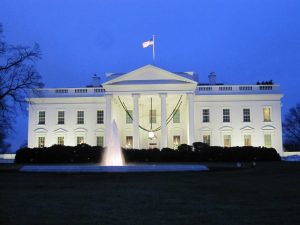The Biden administration released a significant document on March 3 that lays out the contours of U.S. foreign policy over the next four years. The Interim National Security Strategic Guidance, as the name suggests, spells out Biden’s strategic and security priorities as his administration prepares a congressionally-mandate National Security Strategy (and other policy documents that would flow from it, such as a National Defense Strategy). It delineates the administration’s understanding of the security landscape and threat environment and defines its national security priorities.
The release of the interim document signals a sense of urgency, as the United States simultaneously seeks to rebuild at home, restore credibility abroad, and strategically reorient its theater priorities. “I direct departments and agencies to align their actions with this guidance, even as we begin work on a National Security Strategy. We have no time to waste,” Biden said in his introduction to the document.
The document is direct in style, especially when it comes to presenting a very straightforward vision of the security challenges in front of the United States. It presents policy prescriptions aligned with a liberal approach that does not wish away hard realpolitik compulsions – or the fact that for the first time since the end of the Cold War, the U.S. global reputation lies seriously damaged, no small thanks to the chaos of the four years under Donald Trump.
The strategic guidance identifies five key national security challenges: transnational security threats, erosion of democratic norms, threats emanating from changing distribution of global power (and the rise of China), challenges to the liberal international order, and revolutionary advances in technology. What is noteworthy is the order in which threats are identified (in the manner I have just written them down). The end-effect of this rank ordering of course is that China hawks (in the U.S. and elsewhere) are likely to be somewhat disappointed, the document’s clear-eyed vision of the challenges presented by an intransigent China notwithstanding.
Meeting transnational security challenges – whether they stem from pandemics, climate change, terrorism, or nuclear proliferation – of course requires collective action, as the document accepts upfront. But it is unclear how the United States could secure China’s (or Russia’s) cooperation in such efforts while it continues to push back against them, in effect seeking to manage zero- and positive-sum situations both at once.
When it comes maintaining the “alliances, institutions, agreements and norms underwriting the international order the United States helped to establish,” the document is refreshingly honest in noting that the extant system is far from being perfect. It notes that “amid rapid change and mounting crisis, the system’s flaws and inequities have become apparent […]” and that the United States should act with allies and partners to “act, adapt and reform.” One of the main reasons why India, for example, continues to enthusiastically embrace groupings like BRICS (despite obvious problems) is that it has long maintained that the international order is inequitable and unjust, and not reflective of the changing global power distribution. As such, the Biden administration’s admission that the international order needs a degree of reform would be music to New Delhi’s ears.
What is, however, the most distinctive feature of the document is the extent to which it front and centers democratic values as a driver of U.S. foreign policy, the link between U.S. influence and its power of example, and the degree to which erosion of democratic norms around the world (including in the United States) presents a national security threat. “Free societies have been challenged from within by corruption, inequality, polarization, populism, and illiberal threats to the rule of law,” it writes, going on to add: “Nationalist and nativist trends – accelerated by the COVID-19 crisis – produce an every-country-for-itself mentaility and leaves us all more isolated, less prosperous, and less safe.”
But, again quite refreshingly, it notes that much of the administration’s focus on democracy will have to start with actions at home. “Building back better requires us to commit itself to revitalizing our own democracy,” it admits. The document also reiterates the Biden administration’s commitment to holding a Summit of Democracies.
But squaring its democratic commitments – and U.S. values, in general – with interests (a persistent theme in the pages of The Diplomat since Biden assumed office in January) is likely to a near-impossible task for the Biden administration. It notes in the interim strategic guidance that “we will be mindful of both our values and our interests as we engage partner nations” (in the sentence immediately preceding the administration’s commitment to deepening ties with India and other partners). Elsewhere in the document, in the discussion of U.S. policy toward the Middle East, the administration commits itself to not giving partners in the region a “blank check to pursue policies at odds with American interests and values.”
But as I wrote in these pages yesterday (hours before the new document was made public) so far, the administration has disappointed when it came to matching its values rhetoric with concrete actions.

































